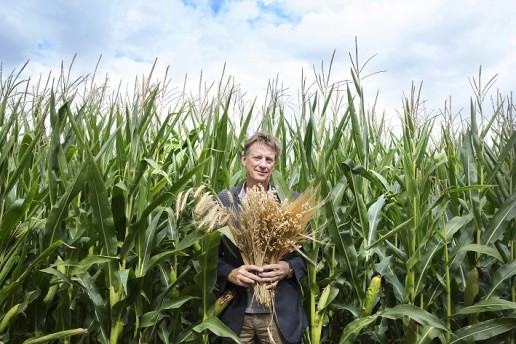Blog: What are carbohydrates?
What are carbohydrates? In this blog series, Professor Emeritus Fred Brouns gives us the facts on this much-discussed nutrient. This first post starts with the basics: what are carbohydrates, and what have they got to do with sugar?

Carbohydrates are a nutrient that provides a vital source of energy for our cells. But what is this thing we call a carb? A carbohydrate consists of carbon ('carb') and hydrogen ('hydrate') bonded in one or more simple sugar molecules. These molecules are also known as saccharides. Carbohydrates that consist of only one molecule are known as monosaccharides and include glucose, fructose and galactose.
Carbohydrates made up of two molecules are called disaccharides; they include table/granulated sugar and lactose. So when we talk about sugars, we are actually talking about all carbohydrates made up of one or two molecules. There are also carbohydrates that consist of chains of three or even nine of these units, which are known as oligosaccharides. Longer than this, they become what we call complex carbohydrates, or polysaccharides. Starch, familiar from foods like potatoes, rice and pasta, is a complex carbohydrate made up of very long chains of glucose molecules.
Sugars
As mentioned above, the term ‘sugars’ is actually a catch-all for all carbs that consist of one or two molecules. Sugars in plants, fruit and tubers can be extracted by milling the crop to a pulp and then adding water to dissolve the sugars. When you subsequently reduce the water content, through evaporation or some other method, you're left with a syrup or treacle. If you let all the water evaporate, you get pure sugar.
There is no difference in make-up between sugars as they occur naturally (such as in sugar beets, sugar cane, honey or dates) and the sugars obtained from these sources. The molecules are identical. The only thing that might vary depending on the source is the colour, scent and flavour. These characteristics are used to enhance certain dishes. For example, cane sugar and honey impart a very particular flavour. Sugars can also be browned by heating them. This process is called caramelisation, which produces the specific flavour of caramel.
Added sugars
In food and beverage production, sugar is added for sweetness. Sugar's specific characteristics are also often used to achieve a desired consistency, texture or shelf-life. For instance, the sugar added to a crème caramel is heated to produce a glazed, brown, caramel-flavoured layer on top of the pudding. In jam, sugar is used not only for sweetness, but also to extend shelf-life, as it slows the growth of microorganisms. That's why light jams with less added sugar tend to go mouldy much faster.
Under the applicable food and drug legislation, added sugars are defined as all monosaccharides and disaccharides that are added during food preparation. Added sugars include refined and unrefined sugars, white and brown sugars, and syrup and treacle; all of these types of sugar have been extracted from their 'natural packaging', as it were, and then concentrated. Natural monosaccharides and disaccharides in unprocessed products like juices, fruit concentrates and bread are not classed as added sugars, and neither is lactose in dairy products. Added sugars have exactly the same chemical structure as naturally occurring sugars, and our bodies digest them in precisely the same way.
By: Prof. dr. Fred Brouns, Professor Emeritus Innovation Healthy Food Maastricht UMC+
This blog was previously published on www.nederlandvoedselland.nl and www.gezondidee.mumc.nl.
Also read
-
The Honours programme is an extracurricular activity for bachelor’s students in year 2 and 3 to showcase their academic skills and teamwork in a real-life project. We talked to Emma van Straten, a Health Sciences student and Honours alumna who organised an international conference on Lama2 in...
-
The University Council of Maastricht University (UM) is holding a confidential today.
-
The Executive Board Executive Board and the University Council of Maastricht University (UM) met today and discussed both the protests at UM and the underlying issue of international cooperations.

